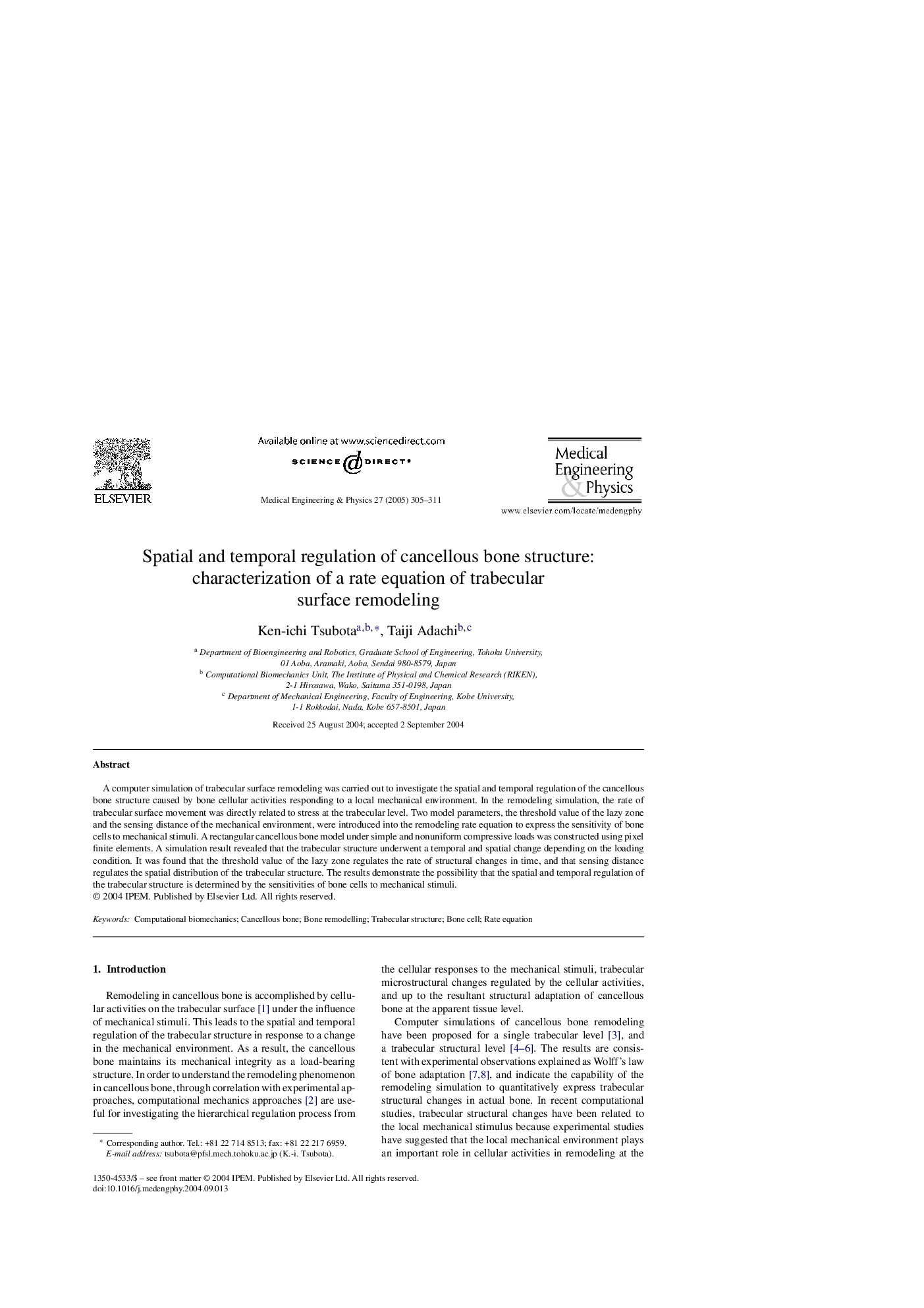| Article ID | Journal | Published Year | Pages | File Type |
|---|---|---|---|---|
| 10435509 | Medical Engineering & Physics | 2005 | 7 Pages |
Abstract
A computer simulation of trabecular surface remodeling was carried out to investigate the spatial and temporal regulation of the cancellous bone structure caused by bone cellular activities responding to a local mechanical environment. In the remodeling simulation, the rate of trabecular surface movement was directly related to stress at the trabecular level. Two model parameters, the threshold value of the lazy zone and the sensing distance of the mechanical environment, were introduced into the remodeling rate equation to express the sensitivity of bone cells to mechanical stimuli. A rectangular cancellous bone model under simple and nonuniform compressive loads was constructed using pixel finite elements. A simulation result revealed that the trabecular structure underwent a temporal and spatial change depending on the loading condition. It was found that the threshold value of the lazy zone regulates the rate of structural changes in time, and that sensing distance regulates the spatial distribution of the trabecular structure. The results demonstrate the possibility that the spatial and temporal regulation of the trabecular structure is determined by the sensitivities of bone cells to mechanical stimuli.
Keywords
Related Topics
Physical Sciences and Engineering
Engineering
Biomedical Engineering
Authors
Ken-ichi Tsubota, Taiji Adachi,
